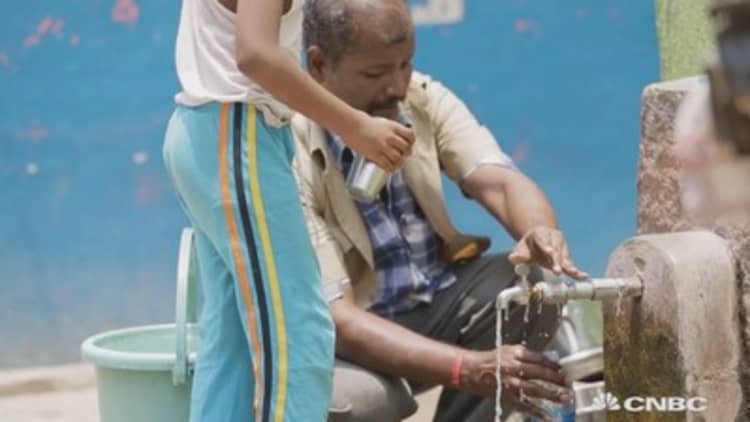
As technology develops, increasingly innovative ways of generating energy from some very unconventional sources are being devised.
To give just two examples, Scottish start-up Celtic Renewables has developed technology to turn the by-products of making whisky into a biofuel, while London-based bio-bean is turning waste coffee grounds into advanced biofuels.
In India, one of the world's most populated countries, the issue of waste and how to dispose of it is a big problem for many: according to WaterAid India, roughly 560 million people in India go to the toilet "in the open."
In Chennai, the state government is looking to tackle problems surrounding sewage and its disposal through using smart solutions. The Kodungaiyur sewage treatment plant both disposes of waste and harnesses its energy potential.
"Chennai, being a metro city, has a sewage treatment capacity of 732 million liters per day," Pandian Appakutti, resident engineer at VA Tech Wabag, told CNBC's Sustainable Energy.
"The sewage has to be treated in order to prevent the water bodies from getting polluted," Appakutti added. "In Chennai we have 13 plants, sewage treatment plants, out of which seven plants are with biogas engines."
The process doesn't use oxygen, but captures methane and uses it in the plant's engines, helping to make the plant self-sufficient.
"We are making this process more economical as well as environmentally friendly," Malhari Habbu, service manager at Clarke Energy, said.
"The biogas generated through the process here mainly contains methane, which is a highly hazardous gas for the greenhouse," Habbu added. "By using it for power generation we are reducing the greenhouse effect caused by this plant."
More innovations are coming: The plant will soon be re-using processed domestic waste water to help relieve droughts and water shortages in the area.
"The secondary treated water is going to be further treated by using a tertiary treatment plant with a capacity of 45 million liters per day," Appakutti said.




